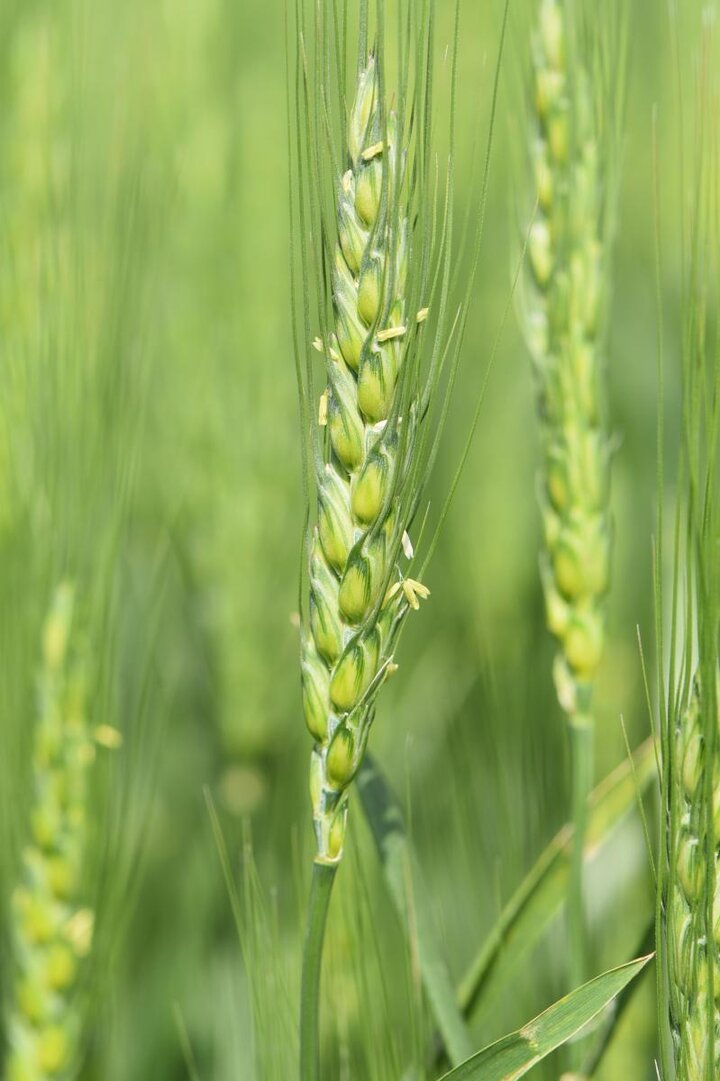


Wheat fields surveyed on May 23 in Webster County in south central Nebraska looked green with low disease levels (Figure 1). However, with the recent and forecasted wet weather, diseases are expected to increase in incidence and severity. At the University of Nebraska Havelock Farm in Lincoln on May 23, fungal leaf spots (Figure 2) were observed in the mid to upper canopy in research plots.
Also observed were low levels of barley yellow dwarf (Figure 3). Wheat was mostly fully headed in the plots and a few heads were in the early stages of flowering (Figure 4). These observations indicate that many wheat fields in Nebraska that were planted on time will be headed or flowering during the next 7 to 10 days.
Due to the wet weather preceding flowering and continuing into the flowering period, Fusarium head blight (scab) is likely to occur. Now is the time to make a decision to spray for scab; once symptoms appear, it is too late to spray. Scab-prone regions in Nebraska are the southeast, south central, and southwest. However, the disease can occur even in the Panhandle if there is excessive rainfall before and during flowering. The recommended fungicides for scab suppression are Prosaro, Caramba, and Miravis Ace (Table 1). These fungicides are also very good to excellent in controlling fungal leaf spots and the rust diseases.
Virus diseases such as barley yellow dwarf cannot be controlled once they occur.

